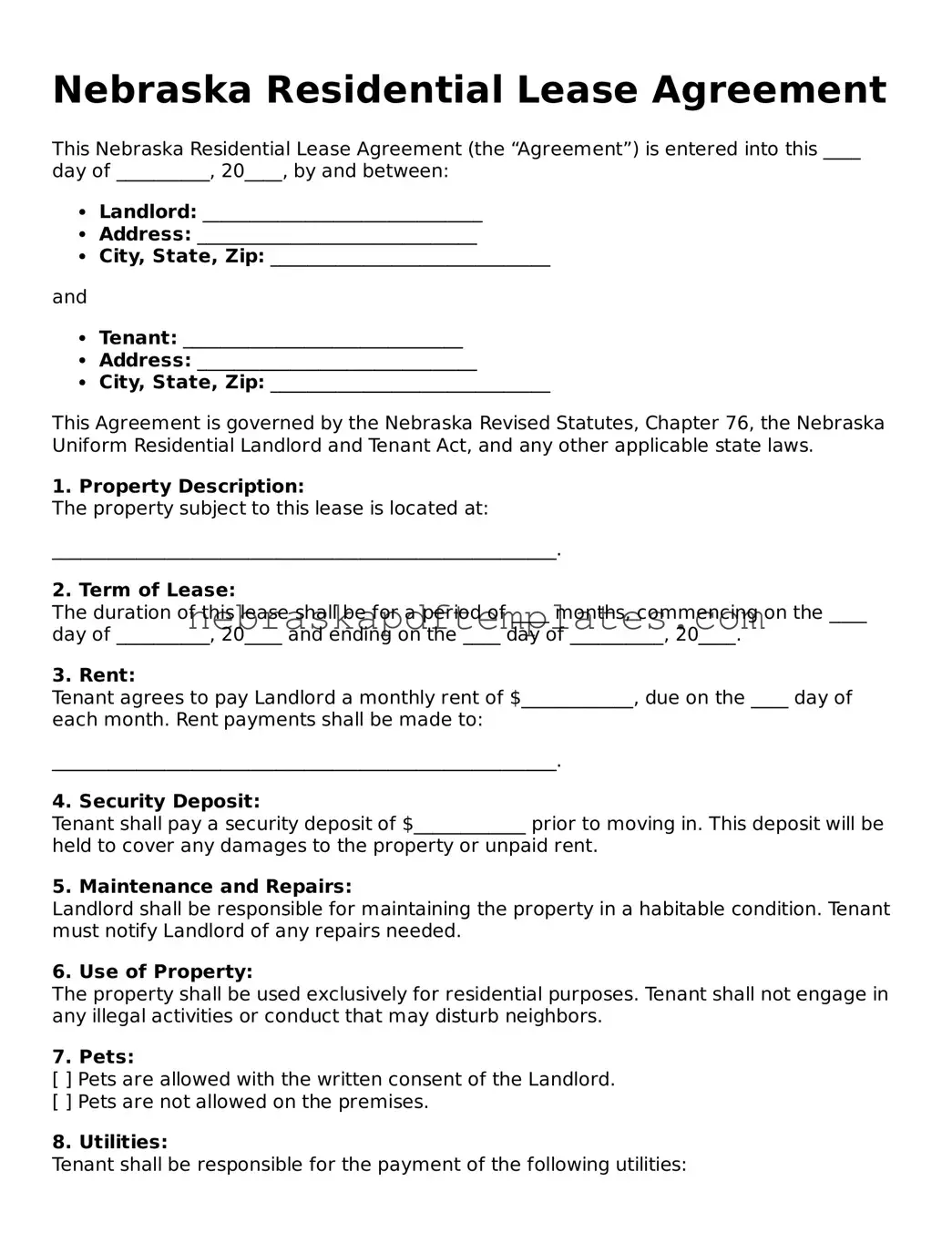What is a Nebraska Residential Lease Agreement?
A Nebraska Residential Lease Agreement is a legal document that outlines the terms and conditions between a landlord and a tenant for renting a residential property. This agreement serves to protect the rights of both parties and ensures clarity regarding rental obligations, payment terms, and property maintenance responsibilities.
What key elements should be included in the lease agreement?
When drafting a Nebraska Residential Lease Agreement, it’s important to include several essential elements:
-
Parties Involved:
Clearly state the names of the landlord and tenant.
-
Property Description:
Provide the address and a brief description of the rental property.
-
Lease Term:
Specify the duration of the lease, whether it's month-to-month or for a fixed term.
-
Rent Amount:
Indicate the monthly rent and the due date.
-
Security Deposit:
Outline the amount of the security deposit and the conditions for its return.
-
Maintenance Responsibilities:
Define who is responsible for repairs and upkeep of the property.
How long is a typical lease term in Nebraska?
In Nebraska, lease terms can vary widely based on the agreement between the landlord and tenant. Common lease terms include:
-
Fixed-term leases:
Typically last for one year but can be shorter or longer.
-
Month-to-month leases:
Automatically renew each month until either party provides notice to terminate.
Both types have their advantages, so it’s crucial to choose one that best fits your situation.
Can a landlord increase rent during the lease term?
Generally, a landlord cannot increase rent during a fixed-term lease unless the lease specifically allows for it. For month-to-month leases, landlords can raise the rent, but they must provide proper notice, usually 30 days in advance, as per Nebraska law. Always check your lease for any specific terms regarding rent increases.
What happens if a tenant wants to break the lease early?
If a tenant needs to break the lease early, they may face penalties as outlined in the lease agreement. Typically, the tenant is responsible for paying rent until a new tenant is found or until the lease term ends. However, some leases may include an early termination clause, allowing tenants to exit the agreement under specific conditions. It’s essential to review the lease terms and communicate with the landlord to explore options.
Are there any specific laws in Nebraska regarding residential leases?
Yes, Nebraska has specific laws governing residential leases. These laws cover various aspects, including:
-
Security Deposits:
There are limits on how much a landlord can charge and regulations on returning deposits.
-
Notice Requirements:
Landlords must provide written notice for lease termination and rent increases.
-
Habitability Standards:
Landlords are required to maintain properties in a safe and livable condition.
Understanding these laws can help both landlords and tenants navigate their rights and responsibilities effectively.
